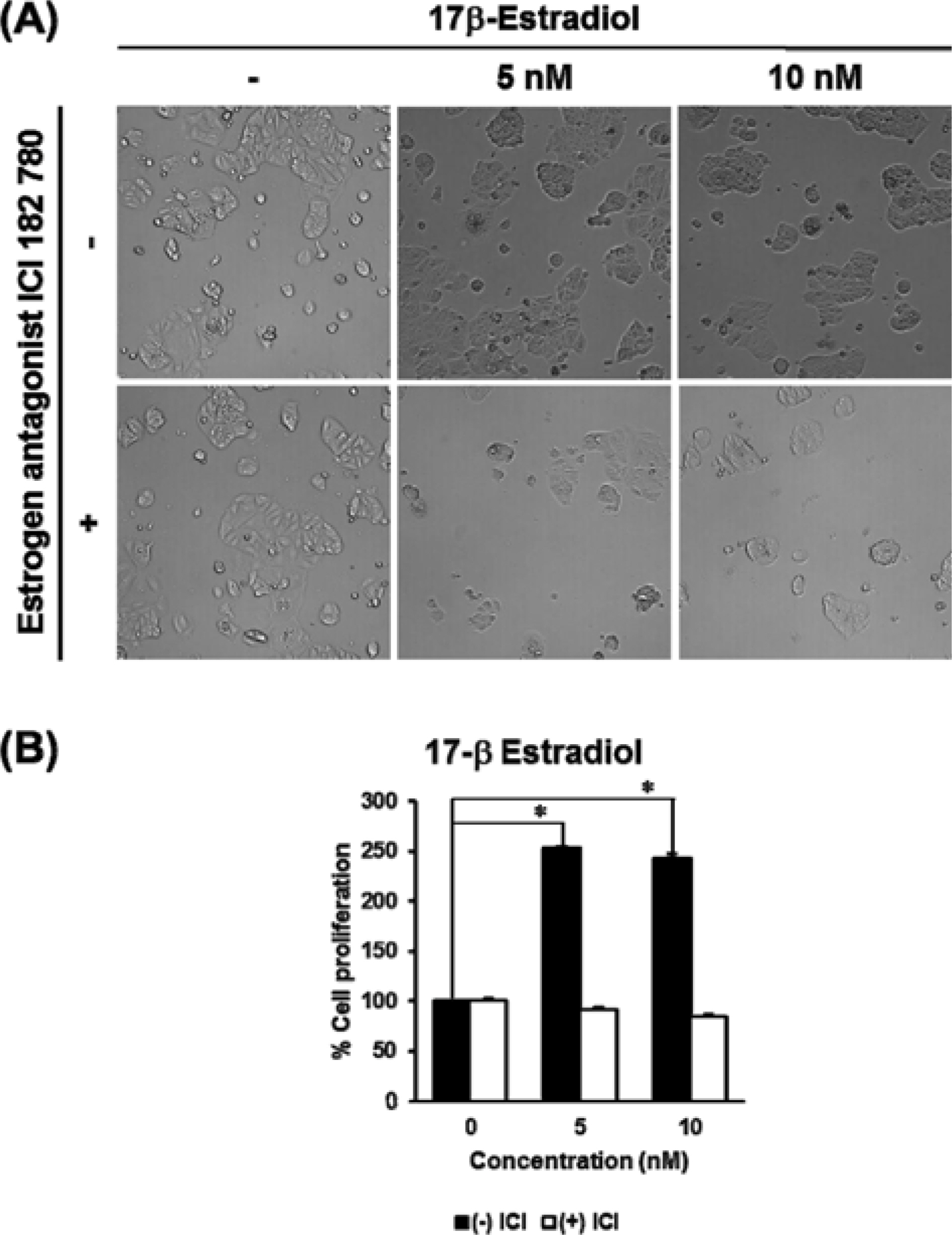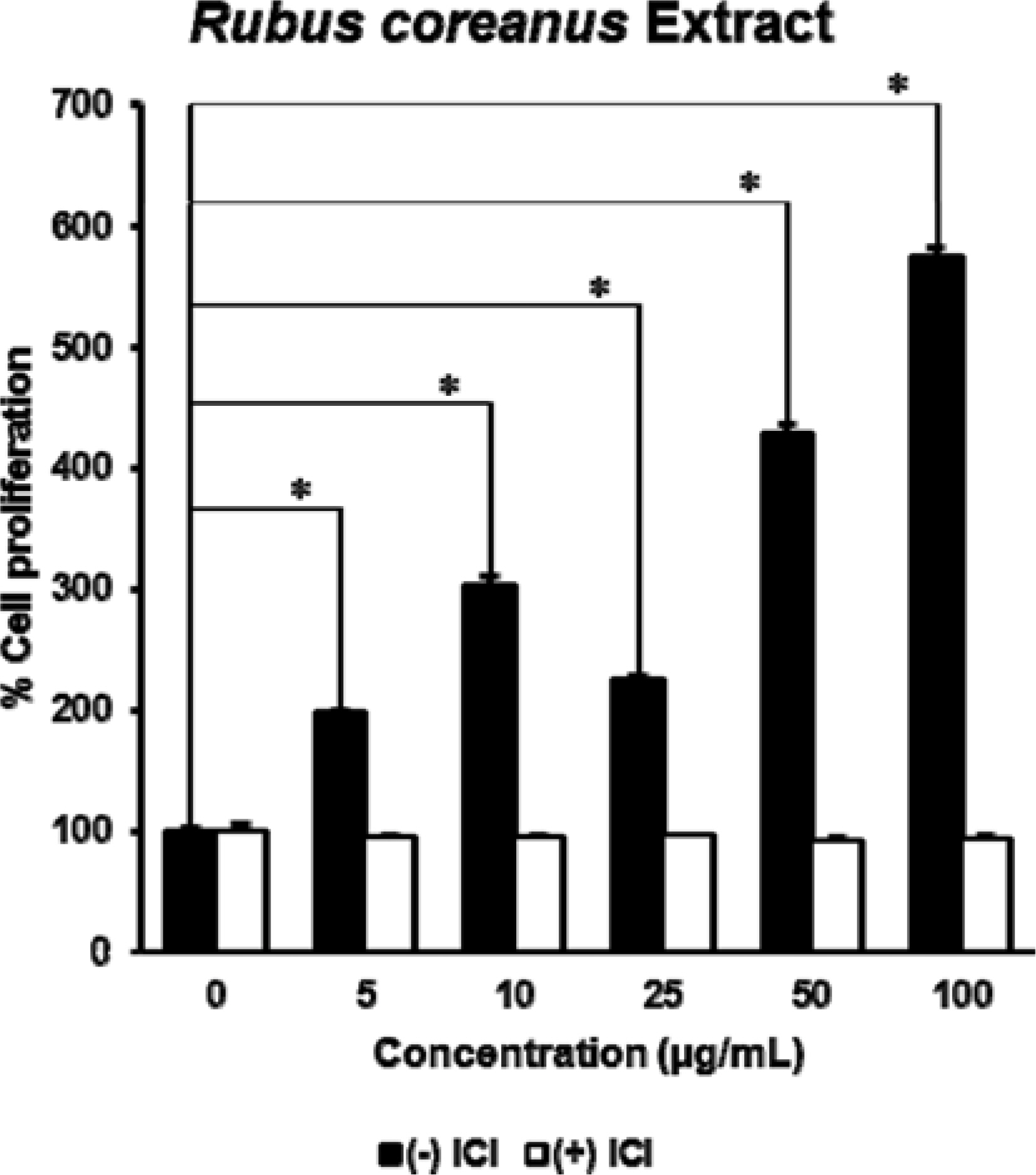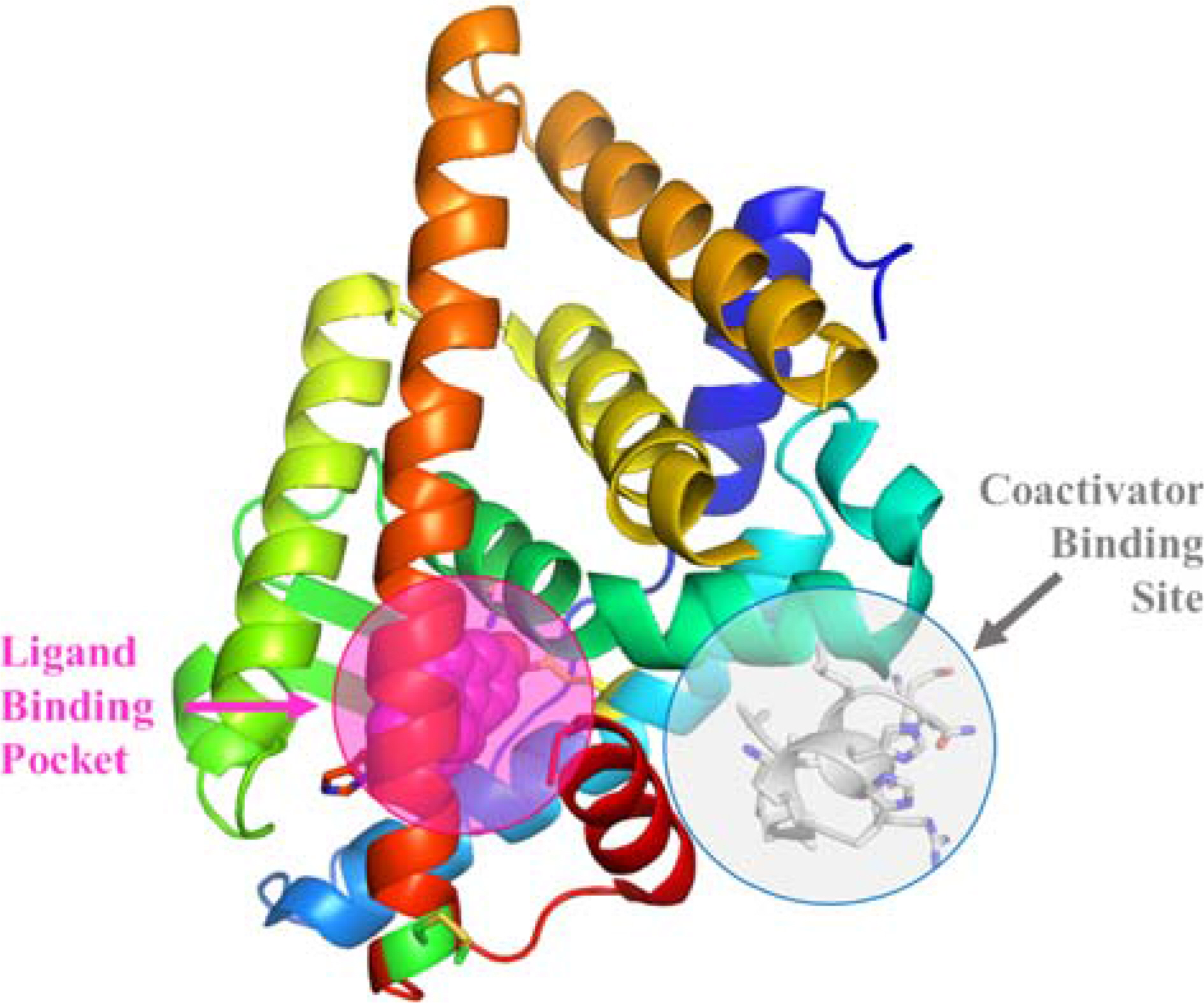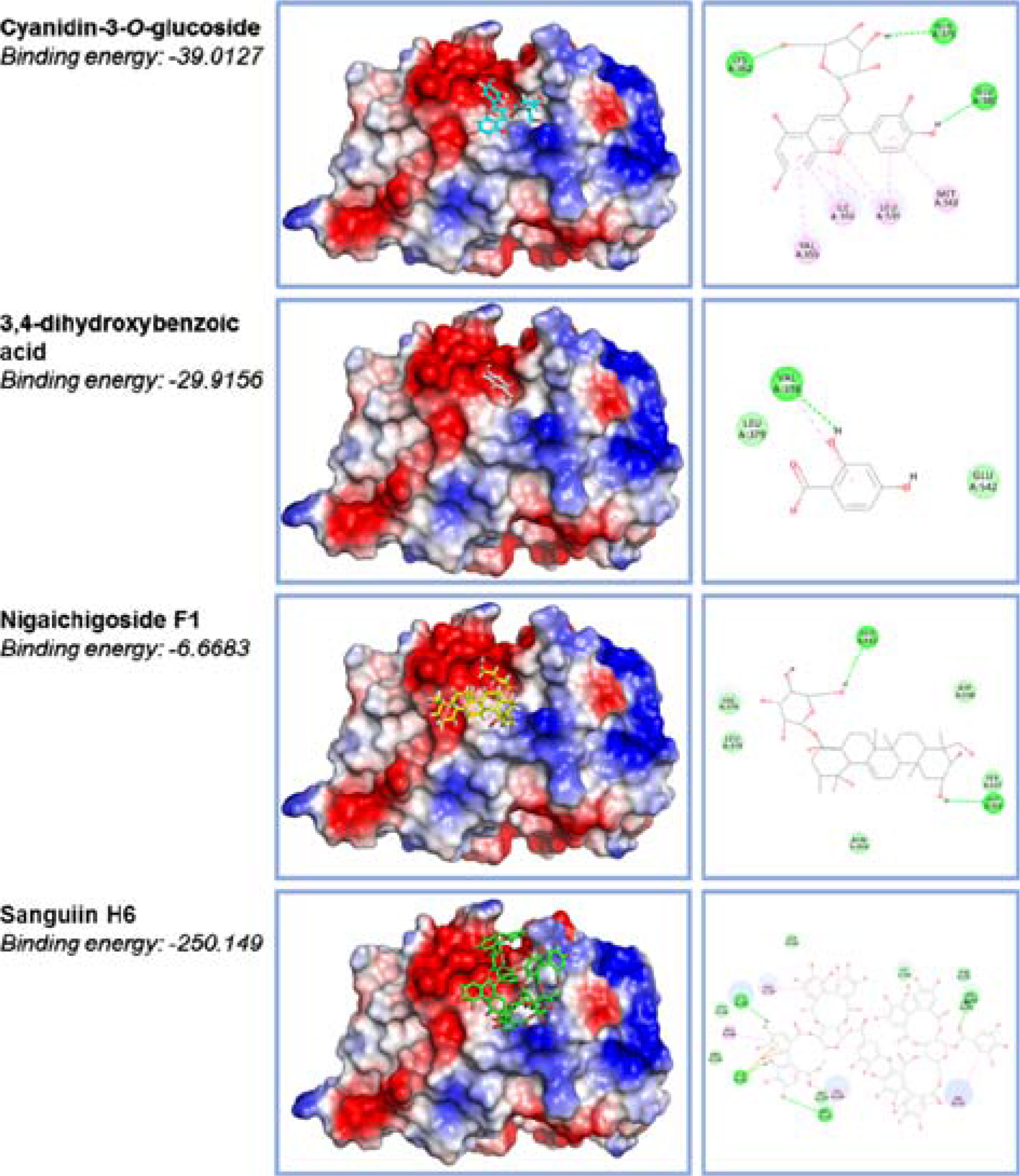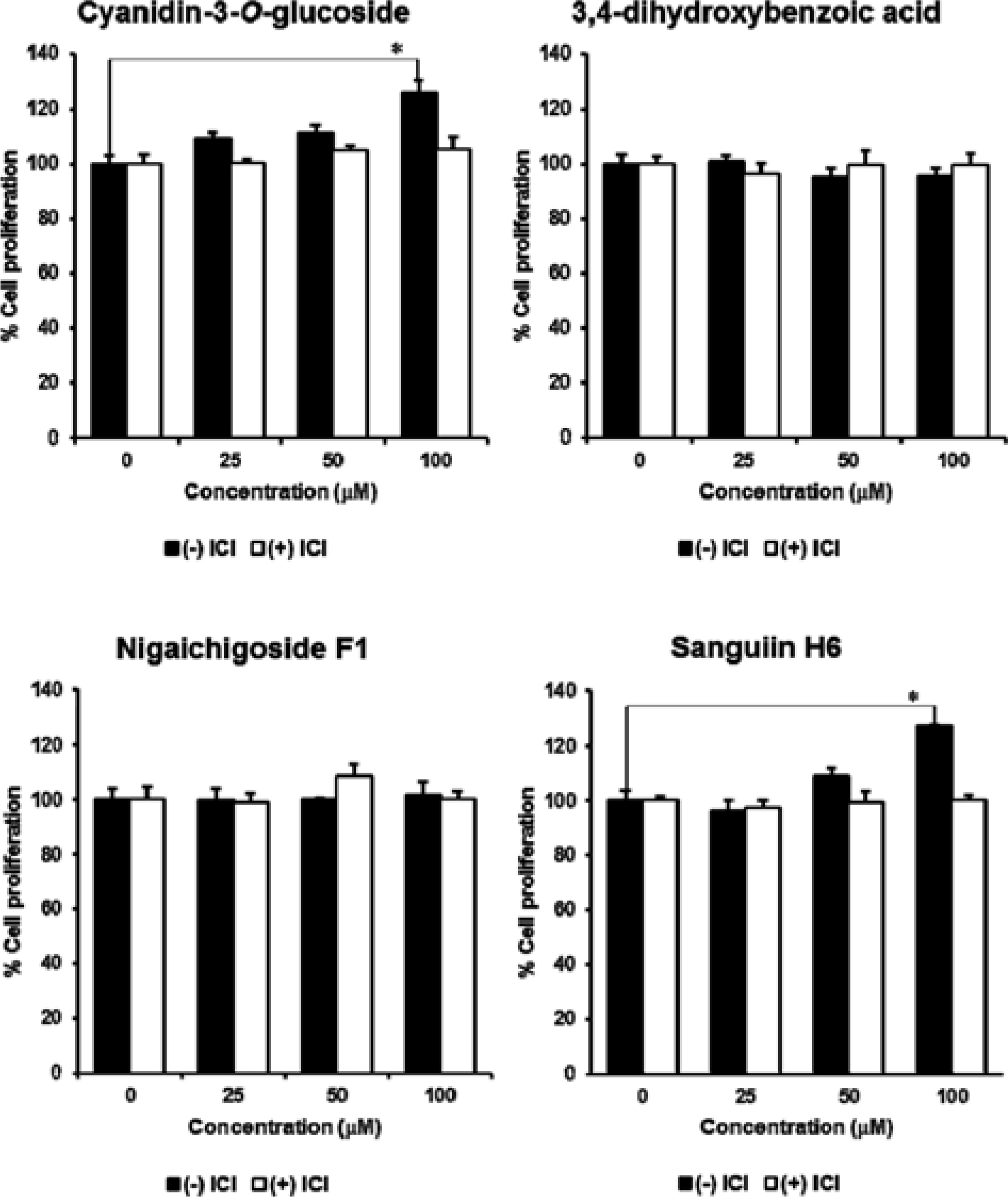Nat Prod Sci.
2019 Mar;25(1):28-33. 10.20307/nps.2019.25.1.28.
Estrogenic Activity of Sanguiin H-6 through Activation of Estrogen Receptor α Coactivator-binding Site
- Affiliations
-
- 1College of Korean Medicine, Gachon University, Seongnam 13120, Korea. kkang@gachon.ac.kr
- 2Department of Obstetrics and Gynaecology, College of Korean Medicine, Daejeon University, Daejeon 302-869, Korea. jeyoo@dju.ac.kr
- 3School of Pharmacy, Sungkyunkwan University, Suwon 16419, Korea.
- 4Department of Medicine, University of Ulsan College of Medicine, Seoul 05505, Korea.
- 5Department of Pediatrics, College of Korean Medicine, Daejeon University, Daejeon 302-869, Korea.
- 6Pharminogene Inc., Yongin 16827, Korea.
- 7Institute of Pharmaceutical Sciences, College of Pharmacy, CHA University, Sungnam 13844, Korea.
- KMID: 2443100
- DOI: http://doi.org/10.20307/nps.2019.25.1.28
Abstract
- A popular approach for the study of estrogen receptor α inhibition is to investigate the protein-protein interaction between the estrogen receptor (ER) and the coactivator surface. In our study, we investigated phytochemicals from Rubus coreanus that were able to disrupt ERα and coactivator interaction with an ERα antagonist. The E-screen assay and molecular docking analysis were performed to evaluate the effects of the estrogenic activity of R. coreanus extract and its constituents on the MCF-7 human breast cancer cell line. At 100 µg/mL, R. coreanus extract significantly stimulated cell proliferation (574.57 ± 8.56%). Sanguiin H6, which was isolated from R. coreanus, demonstrated the strongest affinity for the ERα coactivator-binding site in molecular docking analysis, with a binding energy of -250.149. The initial results of the study indicated that sanguiin H6 contributed to the estrogenic activity of R. coreanus through the activation of the ERα coactivator-binding site.
Keyword
MeSH Terms
Figure
Reference
-
(1). Oh C. M., Won Y. J., Jung K. W., Kong H. J., Cho H., Lee J. K., Lee D. H., Lee K. H.Cancer Res. Treat. 2016; 48:436–450.(2). Jung K. W., Won Y. J., Oh C. M., Kong H. J., Lee D. H., Lee K. H.Cancer Res. Treat. 2017; 49:306–312.(3). Carmichael A. R., Mokbel K.Arch. Plast. Surg. 2016; 43:222–223.(4). Irelli A., Cocciolone V., Cannita K., Zugaro L., Di Staso M., Lanfiuti Baldi P. L., Paradisi S., Sidoni T., Ricevuto E., Ficorella C.Bone. 2016; 87:169–175.(5). de Pedro M., Baeza S., Escudero M. T., Dierssen-Sotos T., Gómez-Acebo I., Pollán M., Llorca J.Breast Cancer Res. Treat. 2015; 149:525–536.(6). Esteva F. J., Hortobagyi G. N.Sci. Am. 2008; 298:58–65.(7). Jameera Begam A., Jubie S., Nanjan M. J.Bioorg. Chem. 2017; 71:257–274.(8). Howell S. J., Johnston S. R. D., Howell A.Best Pract. Res. Clin. Endocrinol. Metab. 2004; 18:47–66.(9). Zheng J., Zhou Y., Li Y., Xu D. P., Li S., Li H. B.Nutrients. 2016; 8:495.(10). Lee J., Dossett M., Finn C. E.Molecules. 2014; 19:10524–10533.(11). Heo J.Donguibogam; Yeogang: Korea. 1994; 946–947.(12). Li J., Du L. F., He Y., Yang L., Li Y. Y., Wang Y. F., Chai X., Zhu Y., Gao X. M.Chem. Biodivers. 2015; 12:1809–1847.(13). Ju H. K., Cho E. J., Jang M. H., Lee Y. Y., Hong S. S., Park J. H., Kwon S. W. J.Pharm. Biomed. Anal. 2009; 49:820–827.(14). Choung M. G., Lim J. D.Korean J. Med. Crop Sci. 2012; 20:259–269.269.(15) Körner W.., Hanf V.., Schuller W.., Kempter C.., Metzqer J.., Haqenmaier H.Sci. Total Environ. 1999. 225:33–48.(16). Soto A. M., Sonnenschein C., Chung K. L., Fernandez M. F., Olea N., Serrano F. O.Environ. Health Perspect. 1995; 103:113–122.(17). Lee S., Barron M. G.PloS One. 2017; 12:1–14.(18). Ng H. W., Zhang W., Shu M., Luo H., Ge W., Perkins R., Tong W., Hong H.BMC Bioinformatics. 2014; 15:1–15.(19). Pang X., Fu W., Wang J., Kang D., Xu L., Zhao Y., Liu A. L., Du G. H.Oxid. Med. Cell. Longev. 2018; 2018:1–11.(20). Jordan V. C. J.Med. Chem. 2003; 46:883–908.(21). McDonnell D. P., Chang C. Y., Norris J. D. J.Steroid Biochem. Mol. Biol. 2000; 74:327–335.(22). Sun A., Moore T. W., Gunther J. R., Kim M. S., Rhoden E., Du Y., Fu H., Snyder J. P., Katzenellenbogen J. A.Chem. Med. Chem. 2011; 6:654–666.(23). Park E. J., Lee D., Baek S. E., Kim K. H., Kang K. S., Jang T. S., Lee H. L., Song J. H., Yoo J. E.Bioorg. Med. Chem. Lett. 2017; 27:4389–4392.(24). Park E. H., Park J. Y., Yoo H. S., Yoo J. E., Lee H. L.Bioorg. Med. Chem. Lett. 2016; 26:3291–3294.(25). Choi M. H., Shim S. M., Kim G. H. J.Food Sci. Technol. 2016; 53:1214–1221.(26). Ko H., Jeon H., Lee D., Choi H. K., Kang K. S., Choi K. C.Bioorg. Med. Chem. Lett. 2015; 25:5508–5513.(27). Helferich W. G., Andrade J. E., Hoagland M. S.Inflammophar-macology. 2008; 16:219–226.(28). Hsieh C. Y., Santell R. C., Haslam S. Z., Helferich W. G.Cancer Res. 1998; 58:3833–3838.(29). Lee J. Y., Kim H. S., Song Y. S. J.Tradit. Complement. Med. 2012; 2:96–104.
- Full Text Links
- Actions
-
Cited
- CITED
-
- Close
- Share
- Similar articles
-
- Additive Estrogenic Activities of the Binary Mixtures of Four Estrogenic Chemicals in Recombinant Yeast Expressing Human Estrogen Receptor
- Selective Estrogen Receptor Modulators: A Review of Action Mechanism and Clinical Data
- Requirement of Metabolic Activation for Estrogenic Activity of Pueraria mirifica
- Sterol-independent repression of low density lipoprotein receptor promoter by peroxisome proliferator activated receptor gamma coactivator-1alpha (PGC-1alpha)
- Effects of estrogen receptor and estrogen on the chromatin structure in estrogen receptor stable transfectants

